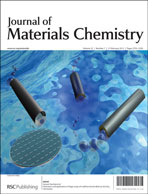UV-induced modulation of the conductivity of polyaniline: towards a photo-patternable charge injection layer for structured organic light emitting diodes
Abstract
In macromolecular electronics the organic material should offer—besides the desired electronic properties—the possibility of lateral


 Please wait while we load your content...
Please wait while we load your content...